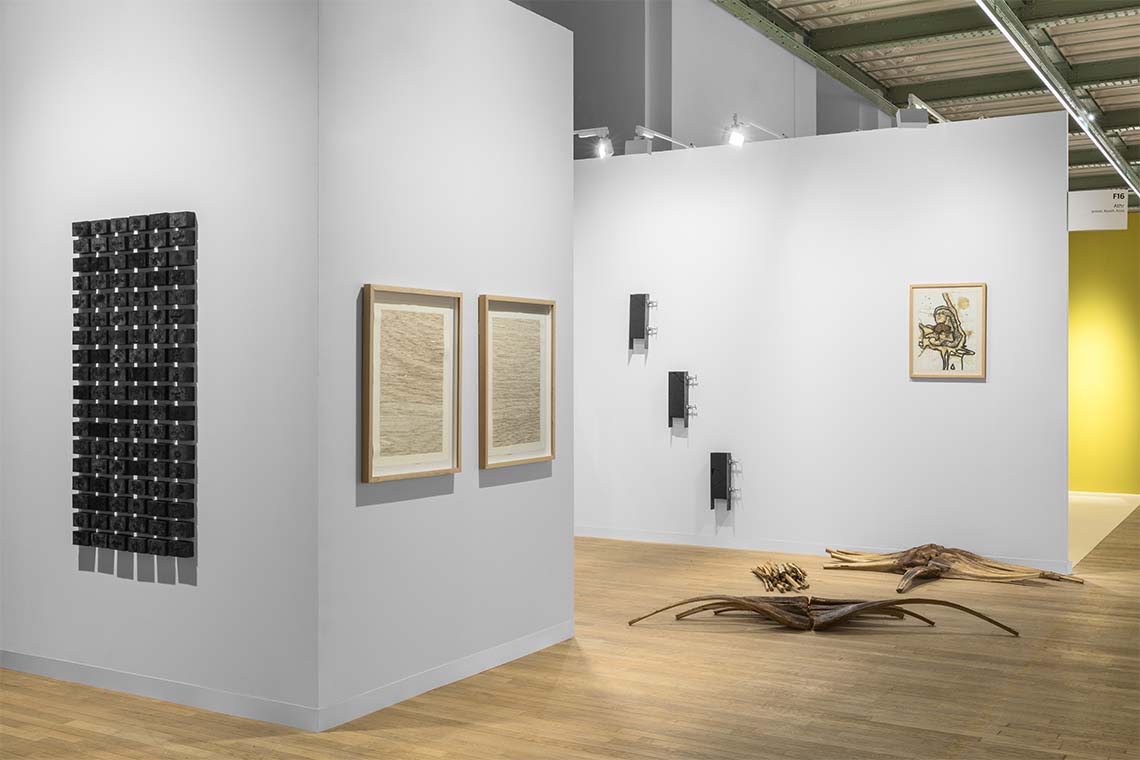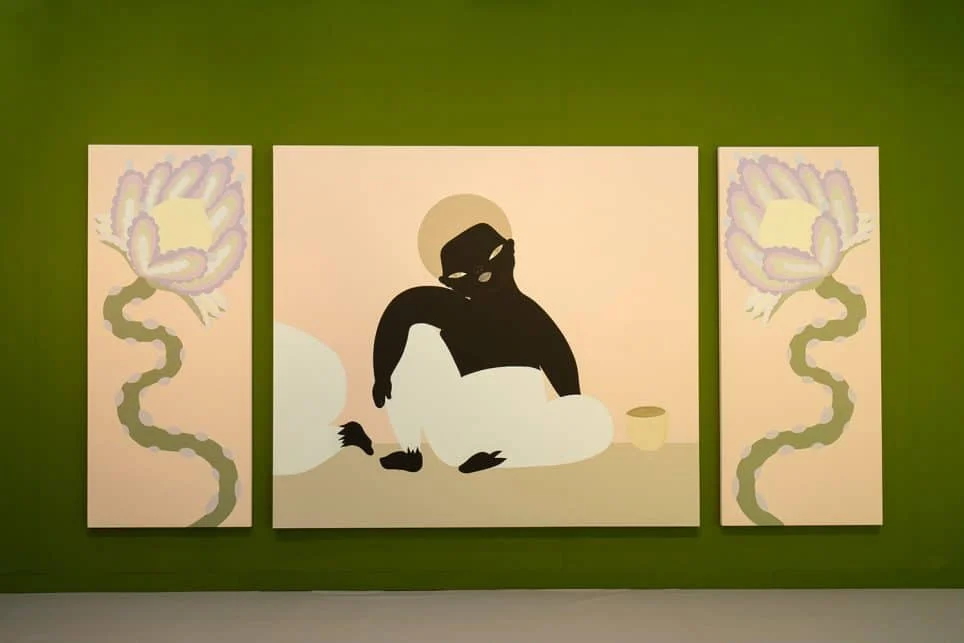Arab Galleries Shine at Art Basel Paris 2024, Bridging History and Contemporary Narratives
This year’s Art Basel Paris returned with grandeur to the iconic Grand Palais, welcoming over 190 galleries from across the globe. Among the most striking presences at the fair were Arab galleries and artists, whose participation reflected a profound connection to the region’s rich history, cultural identity, and modern-day struggles. Their works, both reflective of traditions and representative of contemporary experiences, added a layer of depth and meaning to the event, captivating audiences and collectors alike.
Several key galleries from the Arab world brought their unique perspectives to Art Basel. ATHR Gallery, with spaces in Jeddah, Riyadh, and Alula, featured a group of mid-career and emerging Saudi artists addressing the evolving societal landscape in Saudi Arabia, including the younger generation’s relationship with religion and the natural world. Among them, Muhannad Shono’s sculptures, crafted from reclaimed black foundry sand, and Mohammad Alfaraj’s wooden bone installation, stood out for their eerie, thought-provoking aesthetic.

Loft Art Gallery, hailing from Casablanca and Marrakech, showcased a mini-retrospective of the renowned Moroccan Modernist, Mohamed Melehi. His works spanned early muted, found-material pieces from his time in Rome, to vibrant and colorful abstractions created shortly before his death in 2020. As the first Moroccan gallery selected for Art Basel Paris, Loft’s participation was a proud and personal milestone, as Melehi was not only a featured artist but also a cherished friend of the gallery’s owners.
Marfa’ Projects from Beirut presented a quieter, reflective pairing of works by Seta Manoukian, a Lebanese painter turned Buddhist nun, and Paola Yacoub. Manoukian’s pastel-hued depictions of life motifs such as eggs and blood contrasted with Yacoub’s wax cubes, which encapsulate fragments of life, frozen in time. Together, these works encapsulated the ebb and flow of history, a fitting commentary on the ever-present specter of conflict in Lebanon.
Beirut’s turbulent present loomed large over the exhibitions, with both Marfa’ Projects and Galerie Sfeir-Semler, another Lebanese gallery, reflecting on the role of art amidst war and turmoil. Galerie Sfeir-Semler, known as the first ‘white cube’ gallery in the Arab world, presented an impressive collection, including works by Aref El Rayess, Yto Barrada, and Tarik Kiswanson. Kiswanson’s sleek stainless steel wall hanging, which alludes to his family’s displacement from Jerusalem, stood out as a powerful testament to themes of exile and loss.

The Arab galleries’ participation at Art Basel Paris was not just a celebration of regional talent but also a defiant stand in the face of ongoing political and social challenges. As Joumana Asseily of Marfa’ Projects noted, Beirut’s artists continue to persevere, despite the impossible circumstances they face at home. For them, art offers a vital space of refuge, a means to process and transcend the chaos.
Ultimately, Art Basel Paris 2024 underscored the vital role of Arab galleries and artists in not only preserving cultural heritage but also shaping contemporary discourse. Their work, presented under the iconic glass dome of the Grand Palais, was both timely and valuable, offering insight into the complexities of identity, conflict, and the search for hope. The public of Art Basel, a discerning crowd of collectors and connoisseurs, was the ideal audience to appreciate these profound narratives from the Arab world, presented with passion and purpose.
As Ana Siler from Galerie Sfeir-Semler aptly put it, “After the deconstruction happening now, the next generation will need something to build on.” The artistic voices at Art Basel Paris are providing just that—a foundation of history, memory, and imagination from which new futures can emerge.


